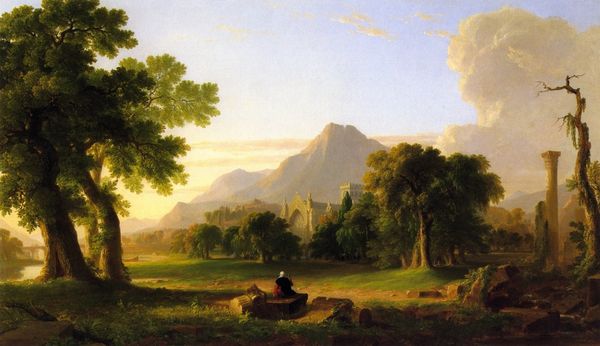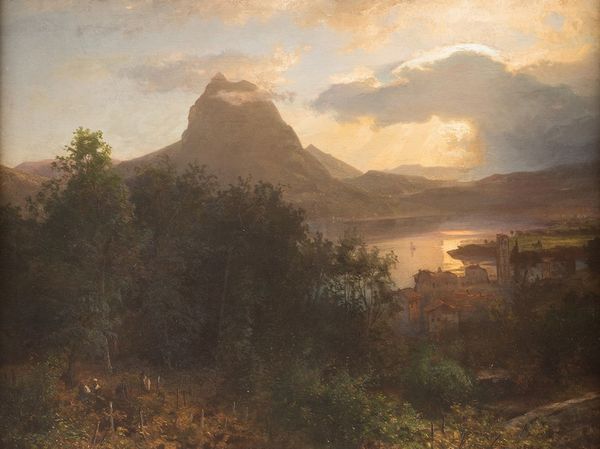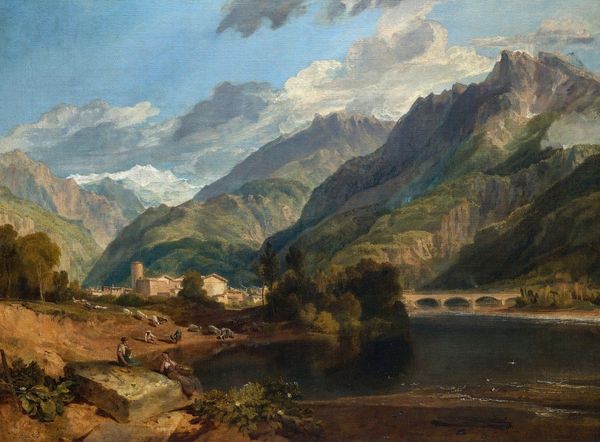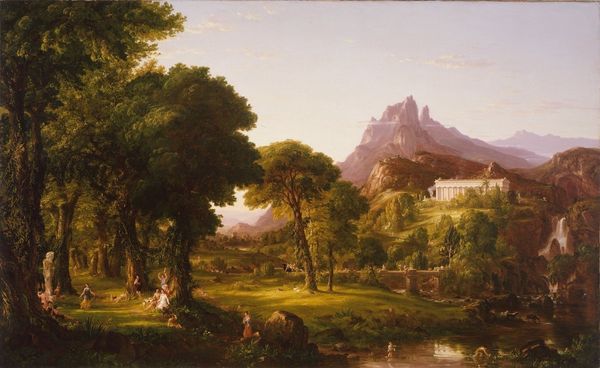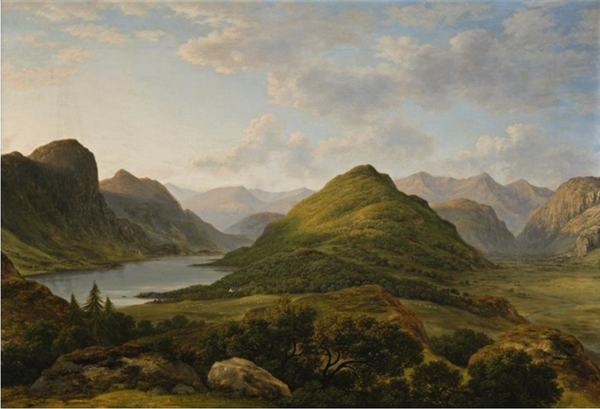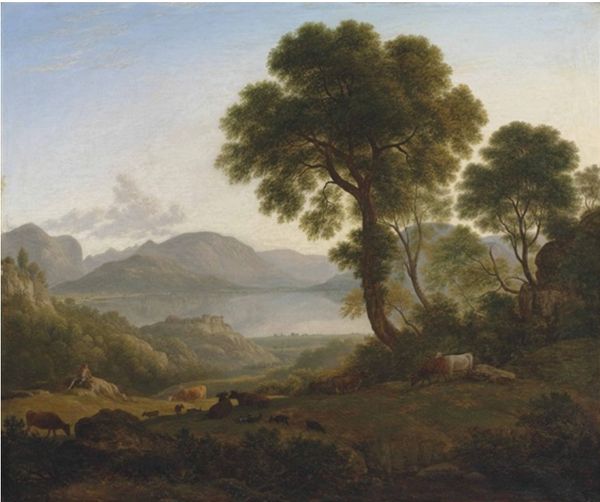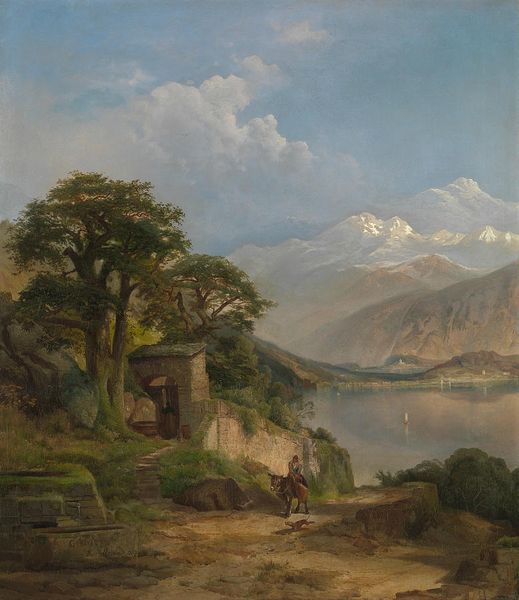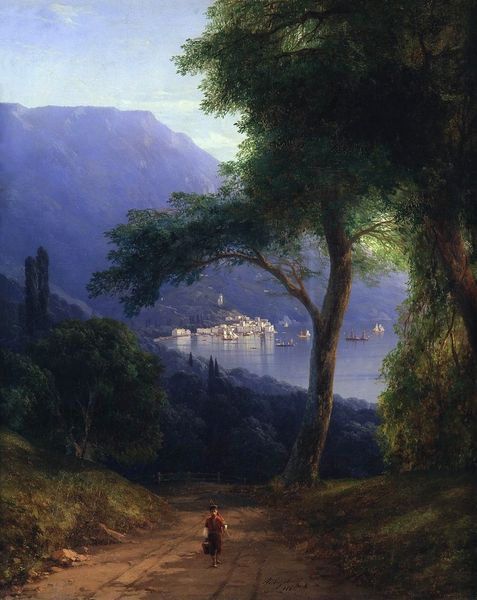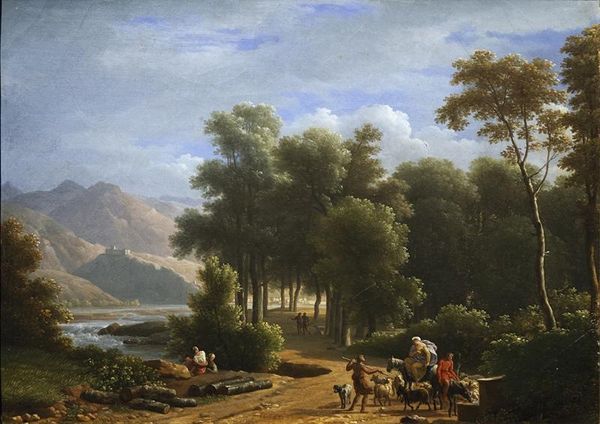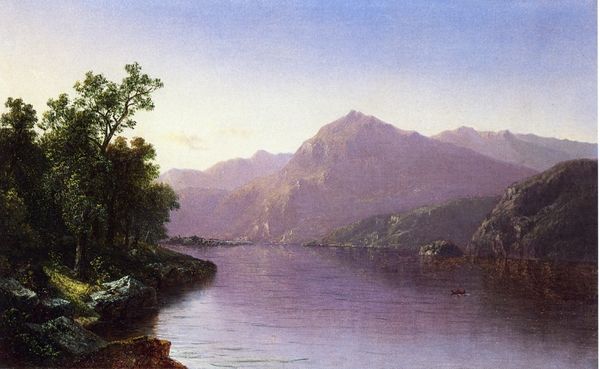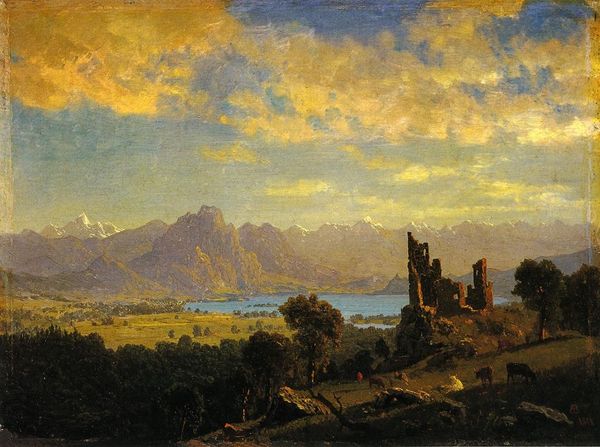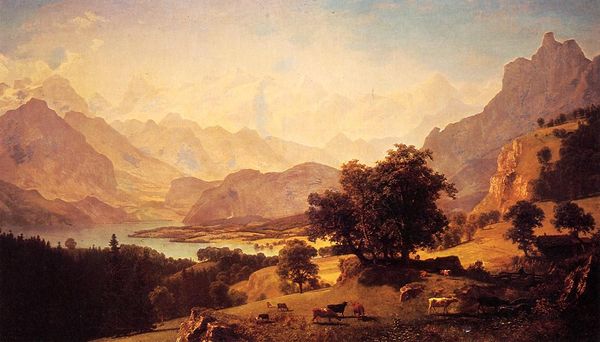
Copyright: Public domain
Editor: Here we have Lev Lagorio's "Crimean Landscape," painted in 1891 with oil on canvas. The softness of the colors gives it an almost dreamlike quality, despite the realism in the landscape itself. What elements of the composition stand out to you? Curator: The immediate impression is the masterful employment of aerial perspective. Note the chromatic scale, fading from the sharp detail and earth tones of the foreground to the hazy blues and purples of the distant mountains. This carefully modulated color scheme establishes depth. Observe the interplay between light and shadow that models the forms of the landscape. How do you perceive the use of light contributing to the painting’s structure? Editor: I see how the light almost carves out the different planes, creating a hierarchy, drawing the eye from the front to the background. So you’re saying the relationship between light, color and form are integral to constructing the scene? Curator: Precisely. The structure isn’t merely representational; it is constructed through these visual relationships. Consider, too, the deliberate placement of the architectural elements – the houses – within the landscape. They are not simply objects, but function as points of visual anchor, contributing to a balanced and stable composition. Editor: So, the arrangement is what brings harmony to the piece? Curator: In a way, yes. Although the brushstrokes create realistic and somewhat romantic imagery, they ultimately are tools which the artist employed to compose a visual whole. The sum becomes more than its parts, due to their interrelation. Editor: This formal analysis has given me a completely new perspective. Curator: Indeed. By focusing on the inherent visual properties of art, one gains a fuller, more critical comprehension.
Comments
No comments
Be the first to comment and join the conversation on the ultimate creative platform.

